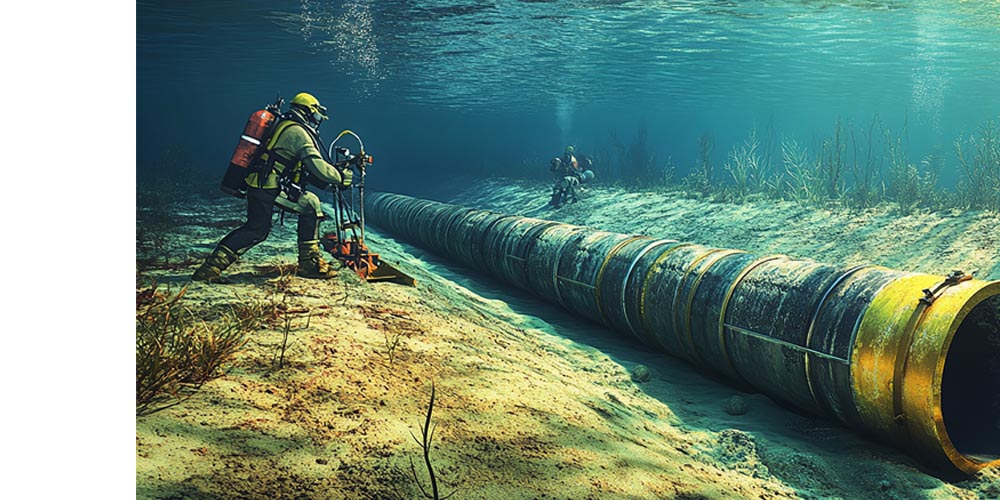
Underwater Inspection Services
Underwater Inspection Services are essential for a wide range of industries that rely on underwater infrastructure and operations. These services utilize technologies such as ROVs (Remotely Operated Vehicles), autonomous underwater vehicles (AUVs), divers, and specialized inspection tools to assess the condition of submerged assets. Here's a detailed breakdown of underwater inspection services, their applications, and methods:
Applications of Underwater Inspection Services
Oil and Gas
- Pipeline Inspections: Subsea pipelines are vital for transporting oil, gas, and other resources. Underwater inspections can detect signs of corrosion, leaks, and mechanical damage to pipelines.
- Offshore Rig Inspections: Offshore oil platforms and rigs need regular inspections to ensure structural integrity, check for corrosion, inspect subsea wellheads, and monitor risers.
- Marine Growth Monitoring: Marine growth (barnacles, algae, etc.) can affect the performance and structural integrity of oil rigs, pipelines, and other submerged infrastructure.
Maritime and Shipping
- Hull Inspections: For commercial vessels, inspections of the ship’s hull, propellers, rudders, and other submerged parts are crucial to prevent accidents and maintain operational efficiency. This can include checking for corrosion, damage from collisions, and signs of wear and tear.
- Dry Docking Alternatives: Instead of dry docking large vessels, which can be expensive and time-consuming, underwater inspections allow shipping companies to monitor the condition of their vessels in operation.
- Shipwrecks: Underwater inspections can be conducted on historic shipwrecks for preservation, archaeological studies, and recovery operations.
Infrastructure and Utilities
- Bridge Inspections: Bridges, especially those with submerged piers or foundations, require routine underwater inspections to detect damage or corrosion. This is critical for structural safety and to prevent potential failures.
- Dams and Waterways: The underwater sections of dams, locks, and waterway structures are regularly inspected for erosion, cracks, and other structural issues.
- Power and Communication Cables: Underwater inspection services are often used to assess the condition of subsea cables used for power transmission or telecommunications.
Marine Research and Environmental Monitoring
- Coral Reef Monitoring: Scientific teams often use underwater inspection services to monitor the health of coral reefs and marine ecosystems, ensuring biodiversity and environmental protection.
- Pollution Assessments: Detecting and documenting submerged pollution or hazardous waste can be critical for environmental protection and legal compliance.
- Marine Life Surveys: Inspecting areas of the ocean for marine life health or biodiversity studies, including mapping habitats, observing species, and assessing the impact of human activity.
Search and Recovery Operations
- Lost Objects: Underwater inspections are used in search-and-recovery operations to locate and retrieve objects lost at sea, such as cargo, aircraft wreckage, and personal belongings.
- Accident Investigations: After maritime accidents, such as ship collisions or capsizing, underwater inspection services can assist in investigating the cause by assessing the damage to the vessel or surrounding infrastructure.
